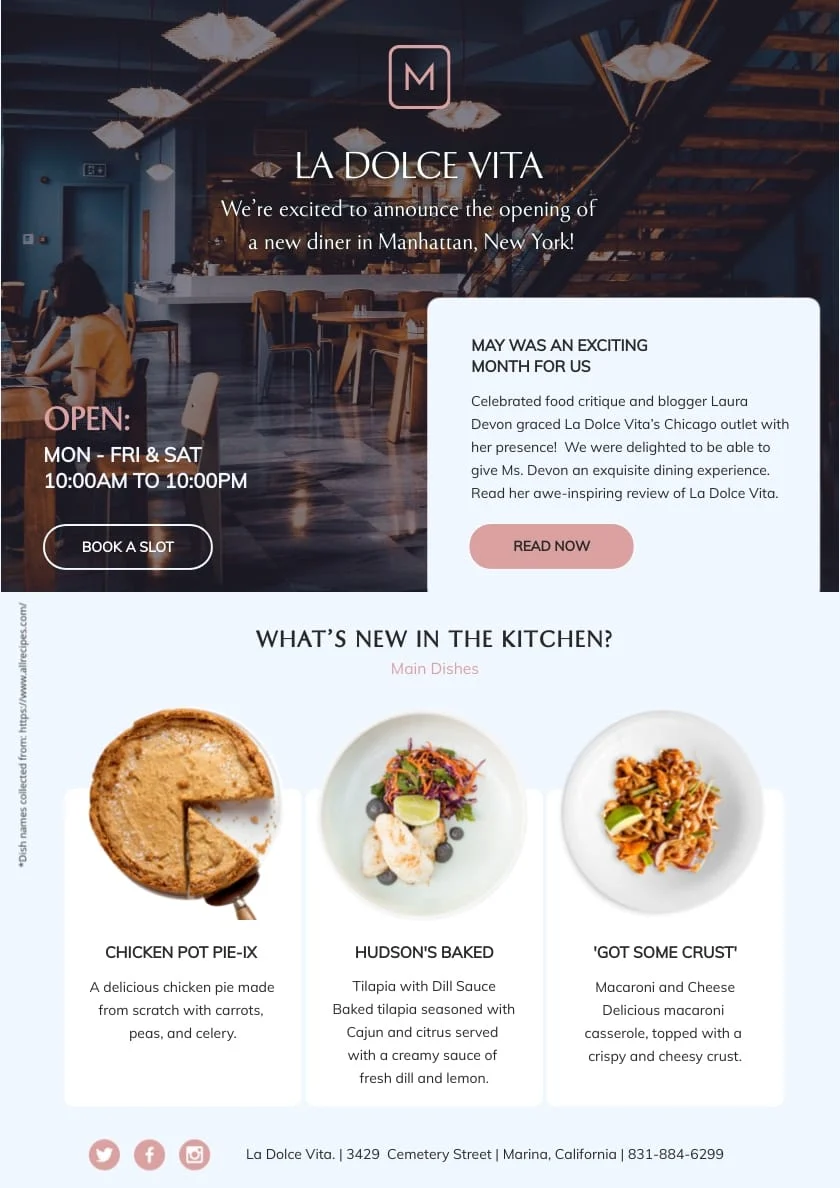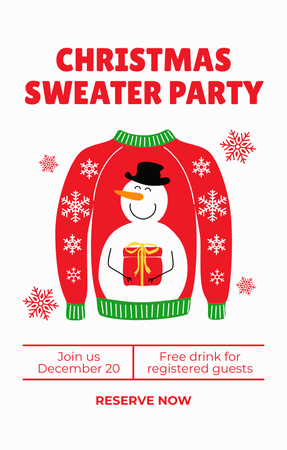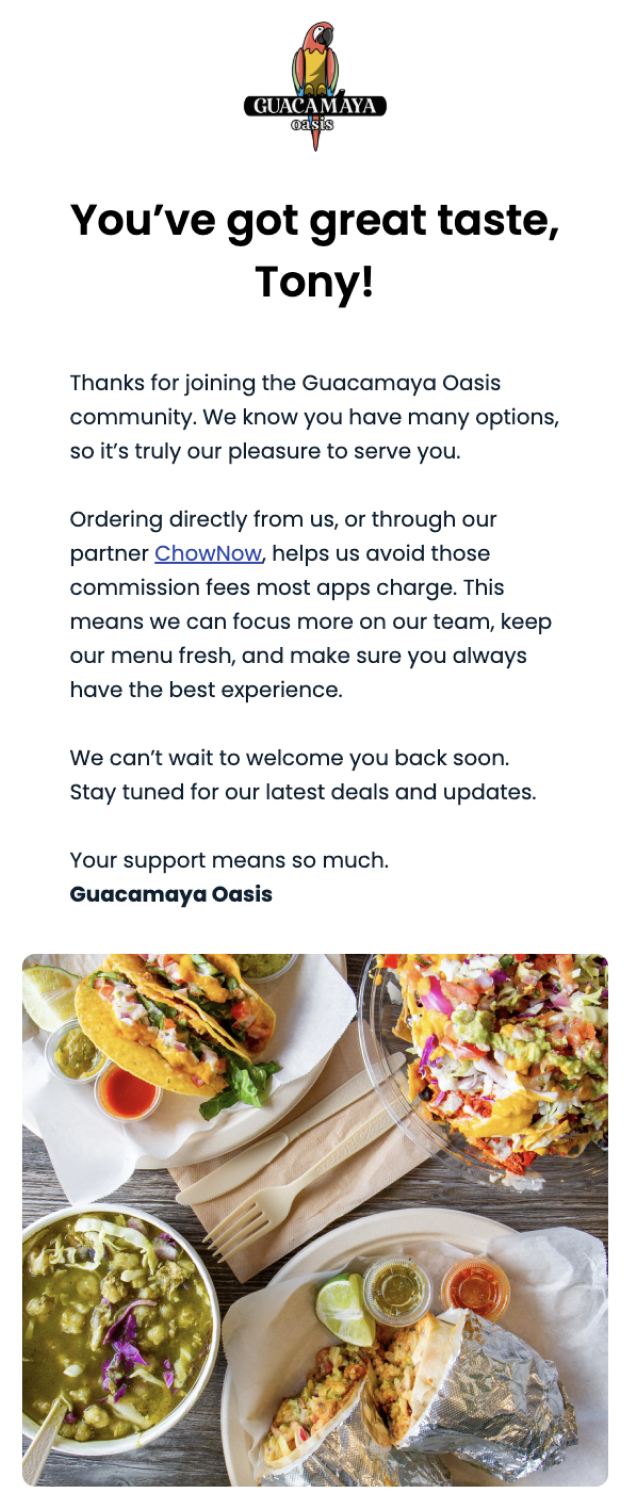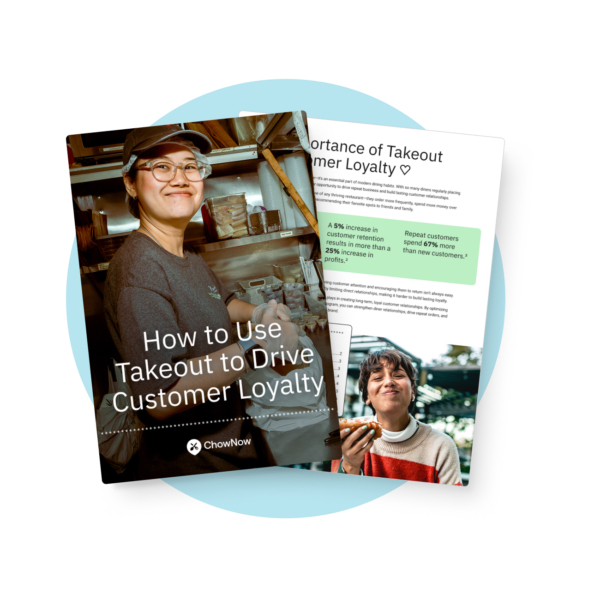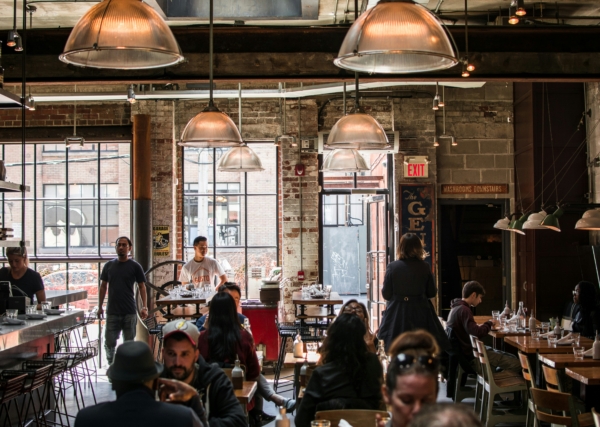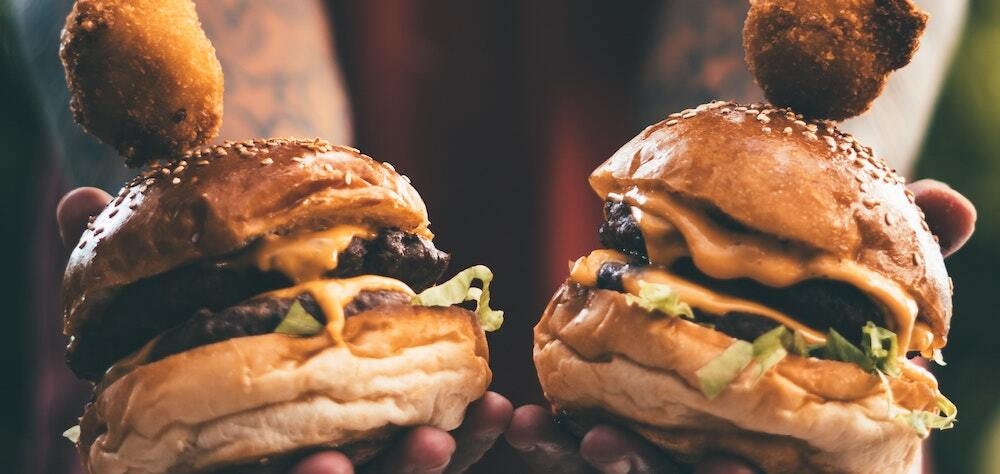Restaurant Email Marketing: Turn Diners Into Regulars

Email marketing might not be as flashy as social media marketing, but for the restaurant industry, it’s possibly the most effective way for any business owner to stay connected with customers.
Unlike social media platforms, where algorithms dictate who sees your posts, emails go straight to your customers’ inboxes—which they check daily.
When used correctly, restaurant email marketing keeps your restaurant top of mind, turning an occasional diner into a loyal customer.

A well-crafted email can remind a past guest to stop by again, encourage reservations for a new seasonal menu, or boost online orders with a limited-time discount.
Plus, with automation tools, you can set up campaigns that run on their own, making it easier than ever to stay connected with your guests without adding more to your plate.
In this guide, we’re going to show you how your restaurant can:
- Quickly build its email list
- Create emails that actually get opened and prompt customers to take action
- Make sending tons of emails super easy
Why Email Marketing for Restaurants Can Be Your Most Powerful Marketing Tool
At its core, email marketing is all about customer retention. You have their email addresses because they’ve already placed an order at your restaurant, making it a powerful tool for impacting your restaurant’s revenue and overall marketing activities.
Email marketing generates an incredible $42 for every $1 spent.
As a marketing channel, email stands out for restaurants because it provides a direct line to customers, unlike social media or paid ads. It also helps restaurants drive more business by encouraging repeat visits and increasing revenue.
That means the hardest part, which is getting a new customer through the door, is already done. Now, your job is to give them a reason to come back.

People are more likely to return to their favorite restaurants when they receive personalized emails with a personal touch that make them feel valued.
And it works! 59% of respondents say marketing emails influence their purchase decisions. A well-timed email with targeted promotions, a new menu item, or an exclusive offer can be the nudge they need to place another order.
The Benefits of Email Marketing for Restaurants
- Increased Customer Engagement: Regular updates keep your restaurant in your customers’ minds, making them more likely to visit.
- Boosts Repeat Business: Special promotions, loyalty rewards, and exclusive deals encourage guests to return.
- More Direct Than Social Media: Your email list is yours—there’s no algorithm deciding who sees your message.
- Cost-Effective Marketing: Compared to paid ads and other channels, email is often more affordable and effective for reaching your customers and driving revenue.
Before we go any further, let’s brush up on the fundamentals of email marketing.
Understanding the Basics of Email Marketing
Successful restaurant email marketing starts with understanding the types of emails you can send and how often to send them. By striking the right balance, you can engage customers without overwhelming their inboxes (or becoming annoying).
Types of Emails Restaurants Can Send
Different emails serve different purposes and mixing up your content keeps your audience interested.
Here are the most effective email types for restaurants:
1. Newsletter
A regular email newsletter keeps your restaurant top-of-mind by sharing exciting updates, upcoming events, and behind-the-scenes content.
Using a professionally designed email template ensures your newsletter is visually appealing and effective in communicating these updates.
This could include chef spotlights, new menu items, or even community involvement stories to help customers feel more connected to your brand.
2. Promotions and Discounts
Special offers drive customer action. Send out exclusive deals like “15% off your next online order,” happy hour discounts, or limited-time promotions on popular menu items.
Here is an example of how to structure a promotional email to drive customer action and a promo email ChowNow sends to diners as part of Automated Email Marketing.
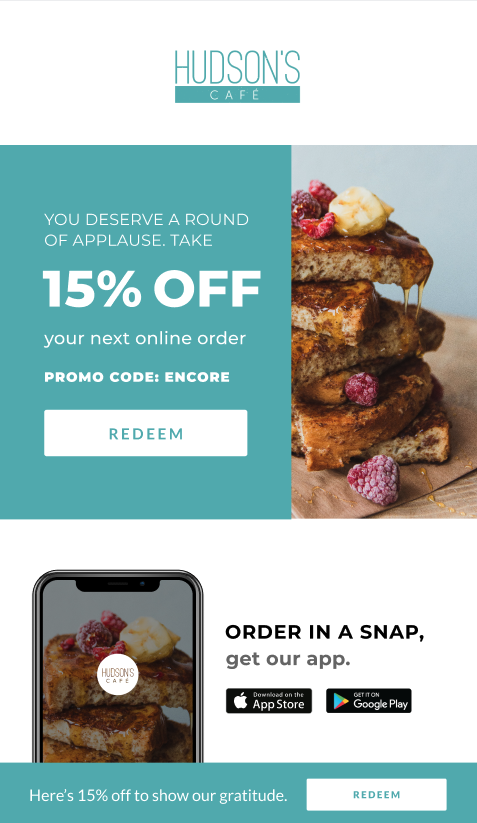
3. Seasonal Menu Updates & Event Announcements
If you roll out seasonal dishes, holiday specials, or themed dining experiences, let your audience know in advance.
For example, a “Christmas Sweater Party” email informs guests of the event while also encouraging them to make a reservation.
4. Loyalty Program Updates
Customers love rewards, but they need reminders to take advantage of them. Use email to notify customers of points earned, upcoming redemption opportunities, and exclusive loyalty perks.
For example, this is a ChowNow Rewards Program email notifying a customer that they’ve earned enough stickers to receive 15% off their next order of $15 or more.
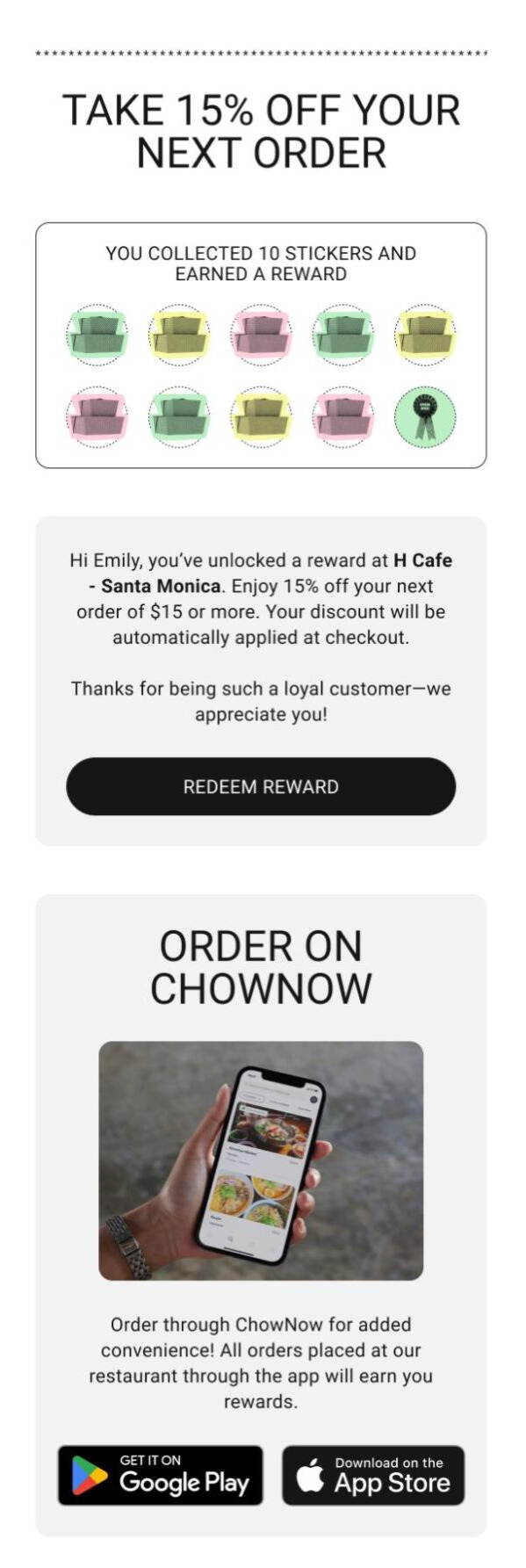
5. Post-Purchase Thank-You Emails
A simple thank-you email after a visit or online order reinforces a positive experience. Sometimes, a thank-you email does just that: expresses appreciation in a clear and straightforward way.
Below is an example of this and gives an order summary so customers are confident their order is correct.

6. Order Confirmation Emails
If your restaurant offers online ordering, confirmation emails are essential. These reassure customers that their order has been received and provide details like estimated pickup or delivery time.
This is an example of a confirmation email with clear order details and a friendly reminder to reach out if they need help.
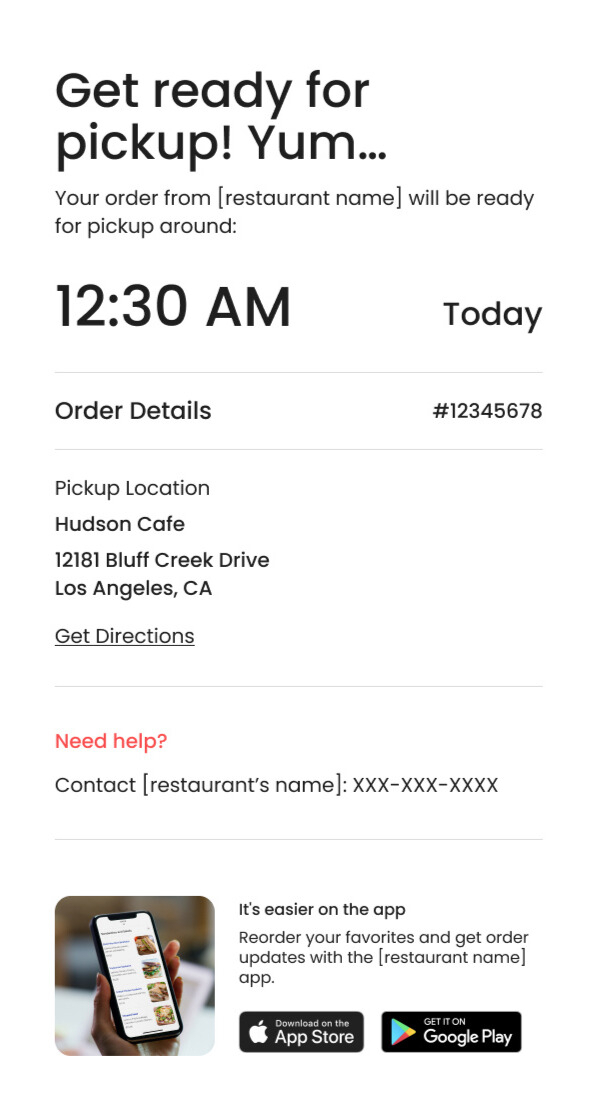
7. Bringback emails
A simple “come back for more” message with a small incentive—like a discount—can be enough to bring them back. These emails work especially well when personalized, encouraging them to explore the menu and see what’s new.

The Best Time and Frequency to Send Emails
How often you send emails is just as important as what you send. Too many emails can lead to unsubscribes, while too few can cause customers to forget about your restaurant altogether.
Here are some best practices:
- Find the right balance: Most restaurants see success with a weekly or biweekly email schedule. If you’re sending promotions, spacing them out every two to four weeks helps maintain engagement without feeling pushy.
- Time it right: Email open rates tend to be highest in the mid-morning (9–11 AM), early afternoon (1-2), and early evening (5–7 PM) when people check their inboxes before work, during lunch breaks, or after work. The average open rate for restaurant emails is a useful benchmark—comparing your results to this industry average can help you measure and improve your performance.
- Test and adjust: Every restaurant’s audience is different, so experimenting with different days and times can help you find the sweet spot for engagement.
The best frequency and timing may vary depending on your audience, so testing different strategies and tracking results will help you refine your email marketing approach.
Now, let’s jump into the first step to email marketing—building your email list.
How to Start Collecting Emails and Building Your Email List
Everything starts with your email list, but the good news is you don’t have to build it from scratch.
Many POS systems already collect customer emails, which you can find in your dashboard’s “Customers” or “Contacts” section. It’s important to focus on permission-based sign-ups to ensure better deliverability and engagement.
In your restaurant, you can capture emails using QR codes on menus, requiring an email for guest WiFi access, training staff to ask customers to join, or offering digital receipts with an opt-in for promotions.
You can capture emails with a sign-up form on your restaurant website, during the online reservation process, or when customers place an order for takeout or delivery.
You can also promote your email list on social media by adding a sign-up link to your bio.
Customers are more willing to share their email if they get something valuable in return. Even a small incentive can yield a significant return on investment (ROI). Here are a few effective ideas:
- A discount on their next visit, like “10% off your next order!”
- A free appetizer or dessert for new subscribers
- Entry into a giveaway, such as a chance to win a $50 gift card
- An automated happy birthday message with a special treat.
How to Craft an Email that Gets Opened
You can send the perfect number of emails at the perfect time all month long, but if no one opens them, what’s the point?
Designing an effective email campaign is crucial to maximize engagement and achieve the best results for your restaurant.
With inboxes crammed full of other businesses’ promotions and marketing, your restaurant’s emails need to cut through the noise, grab attention immediately, and drive customers to take action.
Here’s how to do it:
1. Create subject lines that get noticed.
Your subject line is the first thing customers see, so it needs to be compelling enough to make them click. It needs to be short, clear, and engaging—without sounding spammy.
- Keep it short and direct: Aim for 5-7 words or under 50 characters. For example, “Your VIP Offer Inside.”
- Create urgency: Words like “Limited Time,” “Today Only,” or “Ending Soon” encourage action. For example, “Final Hours: 20% Off Your Next Order”.
- Use personalization: Include a customer’s name when sending relevant emails. For example, “John, Your Favorite Pasta Is Back!”.
- Ask a question: Subject lines like “Craving Something Delicious?” or “Have You Tried Our New Special Yet?” spark curiosity.
- Use a single emoji – A well-placed emoji can make your email stand out, but too many look unprofessional. Stick to one that fits naturally, like 🎉 for a special deal or 🍕 for a food-related promo.
2. Preheader text: The secret to more opens.
The preheader is the short text preview that appears next to or below your subject line. It should complement the subject line, not just repeat it, acting as a teaser to encourage customers to open the email.
A good preheader expands on the subject line, creates urgency, or highlights a benefit for the customer. Aim to keep it between 30-80 characters, as most inboxes cut off longer text, especially on mobile devices.
Examples of strong subject lines + preheaders.
- Subject: “Your Favorite Dish, On Us ”
Preheader: “A little something special for our VIPs—grab it before it’s gone!” - Subject: “Weekend Plans? We’ve Got You Covered”
Preheader: “Book your table now for live music, craft cocktails, and amazing food.”
3. Keep Customers Engaged with Behind-the-Scenes Stories and New Menu Items
Not every email needs to be a promotion. Keeping your content fresh and interesting will make customers look forward to hearing from you. You can also personalize content to match customer preferences and increase engagement.
Here are a few ideas:
- Exclusive discounts or early access: Reward your email subscribers with special deals they won’t find anywhere else.
- Behind-the-scenes stories: Share the inspiration behind a new dish, introduce your chef, or show how your team preps for a busy night. Highlight new dishes in your emails to encourage repeat orders and keep customers excited about your menu.
- Recipes, tips, or fun insights: Give customers a taste of your expertise with simple recipes, cocktail pairings, or fun facts about your ingredients.
Changing up the content gives customers the chance to see more of your restaurant’s personality and strengthens your brand. The more they know, the more connected they’ll feel with your restaurant because it reaffirms that your business exists for people like them.
4. Make your emails visually appealing.
Since people eat with their eyes first, your emails must be visually appealing and professional. Use high-quality, mobile-friendly images of your actual food and restaurant.
It is important not to use the generic food images that come with free email templates, as this can give customers a false idea of your food. Using well-designed content blocks for images and text makes sense for readability.
Not sure where to get photos for your emails? Check out our guide on taking great pictures yourself so you can showcase what makes your restaurant so special.
If taking pics yourself is intimidating, hire a professional, and to add a design element to your emails, use free tools like Canva and Adobe Express.
Also to make your emails easy to read, break up long paragraphs with images, bullet points, and whitespace.
5. Use strong Call-To-Actions (CTAs) that drive action.
Your email should always have a clear next step. Whether you want customers to place an order, make a reservation, or claim a discount, your CTA should guide them to the desired action.
- Make CTAs clear and concise: Use action-oriented phrases like “Order Now,” “Reserve Your Table,” or “Claim Your Free Dessert”.
- Use buttons instead of links: Buttons stand out more and make it easier for mobile users to click.
- Limit distractions: Keep your email focused on one message so customers know exactly what to do next.
Well-made restaurant emails drive customers to take action. Your emails need to grab customers’ attention, show them a valuable offer, and then tell them what to do. The clearer and more compelling your message, the more likely they are to act.
Make Restaurant Email Marketing Significantly Easier By Automating It
Automation makes your email marketing efforts easier and more effective. You can set up automated email campaigns that send themselves based on customer actions, ensuring the right people get the right emails at the right time.
Here are some restaurant emails that work well with automation:
1. Welcome emails make a great first impression.
Thank new subscribers and offer a small incentive, like 10% off their first order. This is a key first step in building your restaurant email list with engaged contacts.
2. Monthly promos to keep customers excited.
Keep your audience engaged by setting up a recurring monthly email featuring timely promotions that are proven to drive repeat orders.
ChowNow’s Automated Email Marketing includes emails featuring a top-performing promo (promotion covered by the restaurant) plus designs that highlight your brand and food–all proven to delight your diners and drive steady repeat orders.
3. Rewards program reminders
If your restaurant has a loyalty program, automated emails like the ones below can remind members when they’re close to earning a reward. Digital rewards create the loyal customer base every restaurant owner dreams of.
You can send reminders when they’re close to earning a reward like “You’re just 5 stickers away from a free entrée!” or encourage repeat visits by celebrating milestones like “You’ve placed 5 orders—here’s a treat on us!”
4. Bring back emails to help your restaurant stay top of mind.
Automatically send gentle reminders to customers who haven’t ordered in a while, giving them a friendly reason to return.
With ChowNow’s Automated Email Marketing, when a diner goes more than 21 days without purchasing from your restaurant, they’ll receive branded emails similar to this.
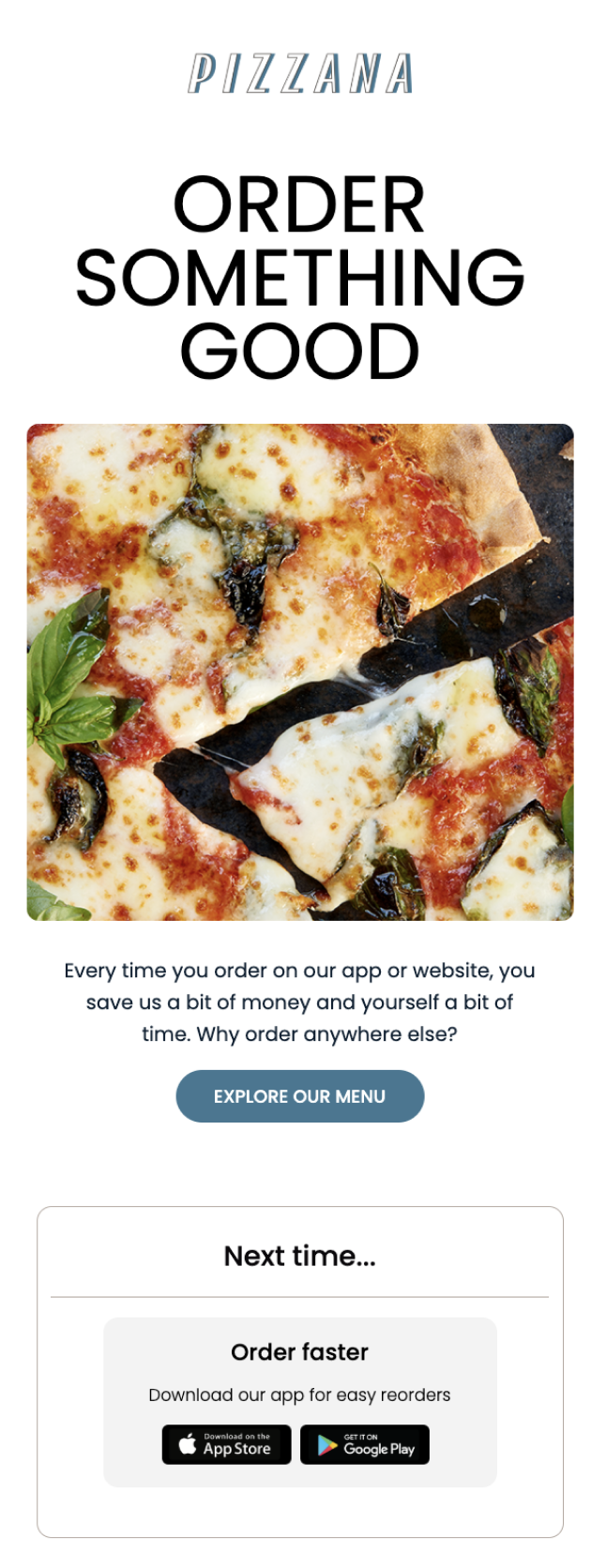
Measure Your Email Performance and Adapt
To understand if your email marketing efforts are working, you need to track your data. Key metrics provide insight into how subscribers are interacting with your email marketing campaigns.
Look at your open rate to see how many people are opening your emails. A low open rate might mean your subject lines aren’t compelling.
The click through rate (CTR) shows how many subscribers clicked a link in your email. This tells you if your content and offer are effective at driving action.
Finally, monitor your unsubscribe rate. A high rate might indicate you’re sending too many emails or the content isn’t relevant. Analyzing this customer data is crucial for refining your strategy.
Bring Customers Back, One Email at a Time
Email marketing is one of the easiest and most effective ways to keep your restaurant top of mind and encourage repeat visits.
Connect with our team to learn how ChowNow’s Automated Email Marketing can make restaurant email marketing easy. These emails can add, on average, up to $34,000 in additional annual revenue.
Restaurant Email Marketing Frequently Asked Questions
Does email marketing work for restaurants?
Yes, email marketing works for restaurants. It’s a low-cost way to reach customers, promote specials, boost repeat visits, and increase direct orders. When done right, it drives loyalty and revenue.
What kind of emails should a restaurant send?
Restaurants can send welcome emails, special promotions, loyalty rewards, event invitations, online order reminders, seasonal menu updates, and re-engagement emails for inactive customers.
How often should a restaurant send marketing emails?
It depends on your audience, but a good guideline is one to four times per month. Too many emails can lead to unsubscribes, while too few can make customers forget about your restaurant.
How can a restaurant collect customer emails?
You can collect emails through online orders, reservations, in-person sign-ups (via QR codes), social media promotions, websites, and digital receipts.
How can I increase my email open rate?
Write short, compelling subject lines. Personalize emails with customer names or past orders. Send at the right time and don’t overwhelm subscribers with too many messages.
Can email marketing help increase online orders?
Yes! Well-crafted emails with clear CTAs, special offers, and direct links to online ordering pages can encourage more customers to place orders.
What’s the ROI of restaurant email marketing?
Email marketing is one of the highest ROI marketing channels, generating $42 for every $1 spent on average. When done right, it’s an affordable and effective way to drive revenue.
